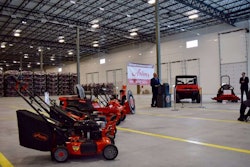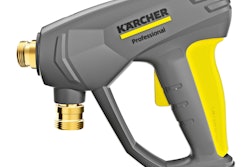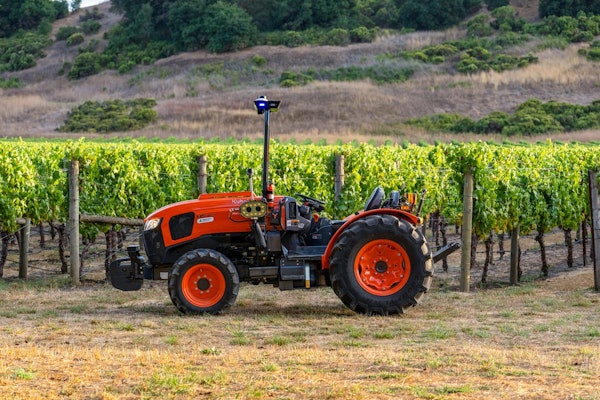 Right now, Driven Landscapes’s crews are still cleaning clients’ gutters and removing leaves.
Right now, Driven Landscapes’s crews are still cleaning clients’ gutters and removing leaves.Photo: Driven Landscapes
What CBS Boston described this past September as “one of the worst droughts in southern New England history” has been around for more than two years now. Naturally, landscape companies have had to adapt.
For South Walpole, Massachusetts-based Driven Landscapes, responding to drought has involved “both cultural and business practices,” said Jonathan Orcutt, founder and president of the company, which recently announced the first of what it hopes will be many new franchise locations in the coming years.
Orcutt says the drought has worsened year by year. “In New England,” he said, “it seems the summers are getting hotter, winters are getting colder and there’s less rainfall.”
Among the cultural practices Driven Landscapes adopted in the face of continuing drought is more extensive use of composting. As winter approached, the company followed up on aeration and overseeding of customers’ lawns by applying a cover of organic compost to the turfgrass.
 Jonathan Orcutt
Jonathan Orcutt“It will strengthen the lawn and make it more drought resistant,” Orcutt said. “Composting has really been getting a lot of traction in New England. I wouldn’t say it’s common yet really, but it is trending.”
It’s a profitable service, he said, and provides long-term benefit to clients. And more drought-resistant grass will hold up better – and need more frequent mowing – once the growing season returns, Orcutt said.
Plantings, too, are changing in the face of continuing drought. Orcutt says Driven Landscapes has been “shifting the kinds of plants we install.” One example is greater use of ornamental grasses, which are drought tolerant and “tough,” he said. What’s more, they can be found in about 100 varieties.
“A lot of plants are succumbing to winter burn,” Orcutt said, “so we’re trying to put in more hardy stuff that will stand the test of time.”
On the business side, Driven Landscapes tries to maintain an accurate view of each of its services’ profitability, and the drought has affected that picture as well. For example, Orcutt says, mowing is extremely important to his and other landscape management companies, but there’s no denying it’s also the least profitable service.
“It’s a necessary job because you have to do it to get the other, more profitable work,” Orcutt said. “One thing that happens to a lot of companies is that they get so many mowing accounts and become so focused on that, they don’t offer auxiliary services that are more profitable.”
In drought conditions, he said, mowing should decline.
“One of other things we spend time training our crew leaders on is responsible mowing,” Orcutt said. “It may sound like common sense, but it’s not done as much as it should be.”
Clients are normally set up for weekly mowing during the growing season, Orcutt said, but if the forecast calls for highs in the upper 90s, “we will live without that mowing revenue one week so we don’t burn the lawn. You can preserve the lawn and keep it growing throughout the season by being responsible about not mowing.”
You’ll make more money in the long run, he said, because the lawn, when cared for properly, will keep growing throughout the season.
During a normal season, Driven Landscapes mows about 350 lawns a week. Despite the drought, the company managed to increase 2016 sales by $225,000.
 Driven Landscapes places an emphasis on caring for the lawn year-round so it can survive drought conditions.
Driven Landscapes places an emphasis on caring for the lawn year-round so it can survive drought conditions.Photo: Driven Landscapes
The late summer slowdown is a great opportunity for cross-training, Orcutt said, and the company teaches people who have never mowed how to do so professionally and teaches workers who can mow how to prune, as most of that work is done in the summer.
“Our busiest time is April to June, which is absolutely nuts,” Orcutt said. “September through November is also crazy busy.”
For the Massachusetts company, September and October are devoted mostly to planting and lawn installation. From mid-October through the end of fall, Driven Landscapes’ crews will be cleaning clients’ gutters and removing leaves.
In April of this year, a Driven Landscapes franchise will open in Hopkinton, Massachusetts, owned by two individuals who have worked with Orcutt’s company the past four years. Orcutt hopes to see other franchises in Massachusetts this year and eventually nationwide.










